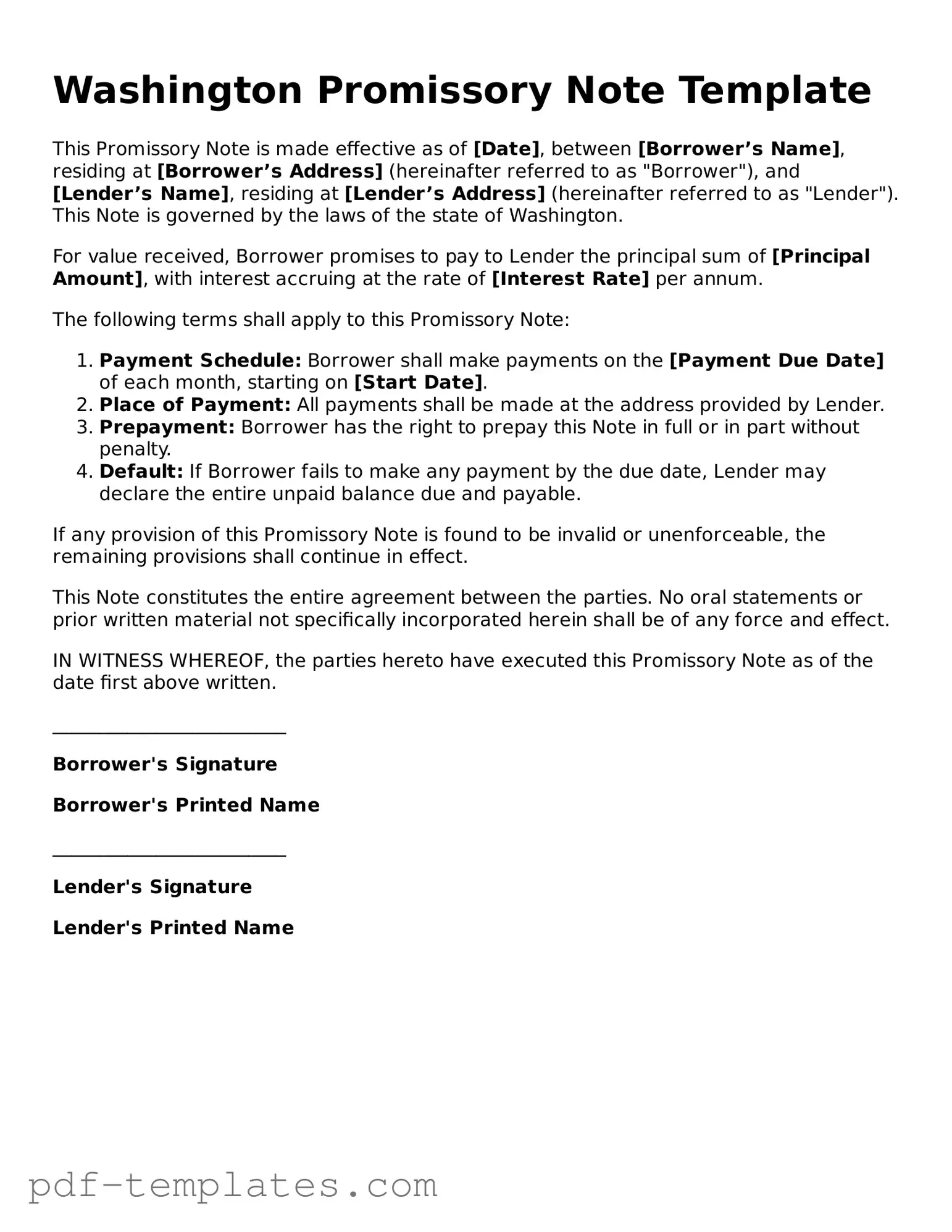The Washington Promissory Note form shares similarities with a Loan Agreement. Both documents outline the terms of a loan, including the amount borrowed, interest rate, and repayment schedule. While a promissory note is a straightforward promise to repay, a loan agreement may include additional clauses regarding default, collateral, and other legal protections for the lender. Essentially, both serve to formalize the borrowing process, but a loan agreement provides a more comprehensive legal framework.
Another document that resembles the Washington Promissory Note is the Secured Promissory Note. This type of note includes a security interest in an asset, which acts as collateral for the loan. If the borrower defaults, the lender has the right to seize the specified asset. Like the Washington Promissory Note, it contains essential information about the loan terms, but it adds an extra layer of security for the lender.
The Washington Promissory Note is also similar to a Personal Loan Agreement. This document is used when an individual borrows money from another individual or financial institution. It details the loan amount, repayment terms, and interest rates, much like the promissory note. However, a personal loan agreement may also include terms related to the borrower's creditworthiness and specific conditions for repayment, providing a more tailored approach to personal lending.
Additionally, the Washington Promissory Note can be compared to a Business Loan Agreement. This document is used when a business borrows funds for operational needs or expansion. While both documents outline loan terms, a business loan agreement often includes clauses related to business performance, use of funds, and potential consequences for default. This makes it more complex than a standard promissory note, which typically focuses solely on repayment.
For those involved in lending agreements, it's essential to utilize proper documentation that safeguards all parties' interests. The https://formcalifornia.com offers valuable resources for creating legally sound loan agreements, ensuring that every aspect, from repayment terms to collateral requirements, is clearly defined and agreed upon.
The Washington Promissory Note is also akin to a Mortgage Note. A mortgage note is a specific type of promissory note that secures a loan with real estate as collateral. Both documents detail the borrower's promise to repay the loan, but a mortgage note includes specific terms regarding the property and the lender's rights in case of default. This added layer of security is crucial in real estate transactions.
Finally, the Washington Promissory Note bears resemblance to an Installment Loan Agreement. This document outlines a loan that is repaid in regular installments over a specified period. Like the promissory note, it specifies the loan amount and interest rate. However, the installment loan agreement may provide more detailed information about payment schedules and late fees, making it a more structured document for borrowers who prefer predictable payment plans.
